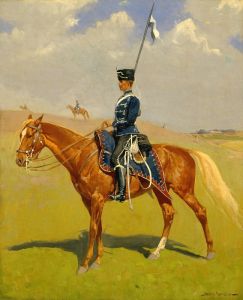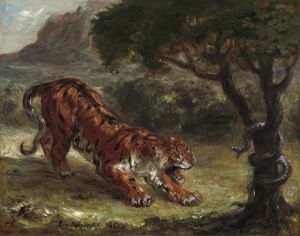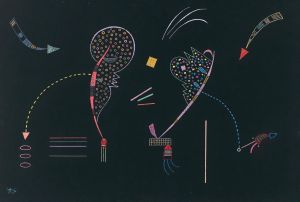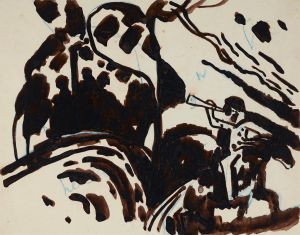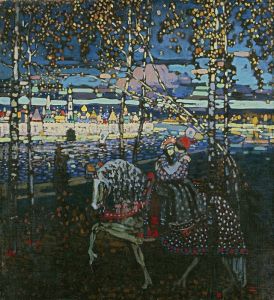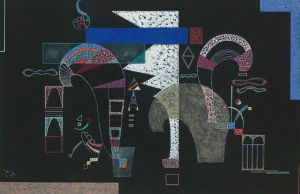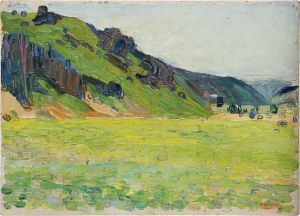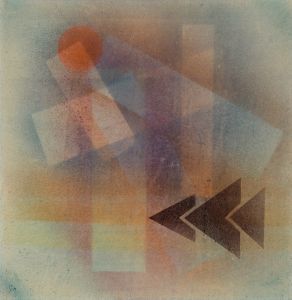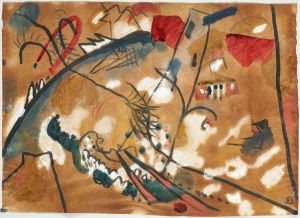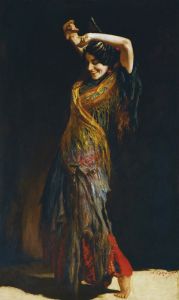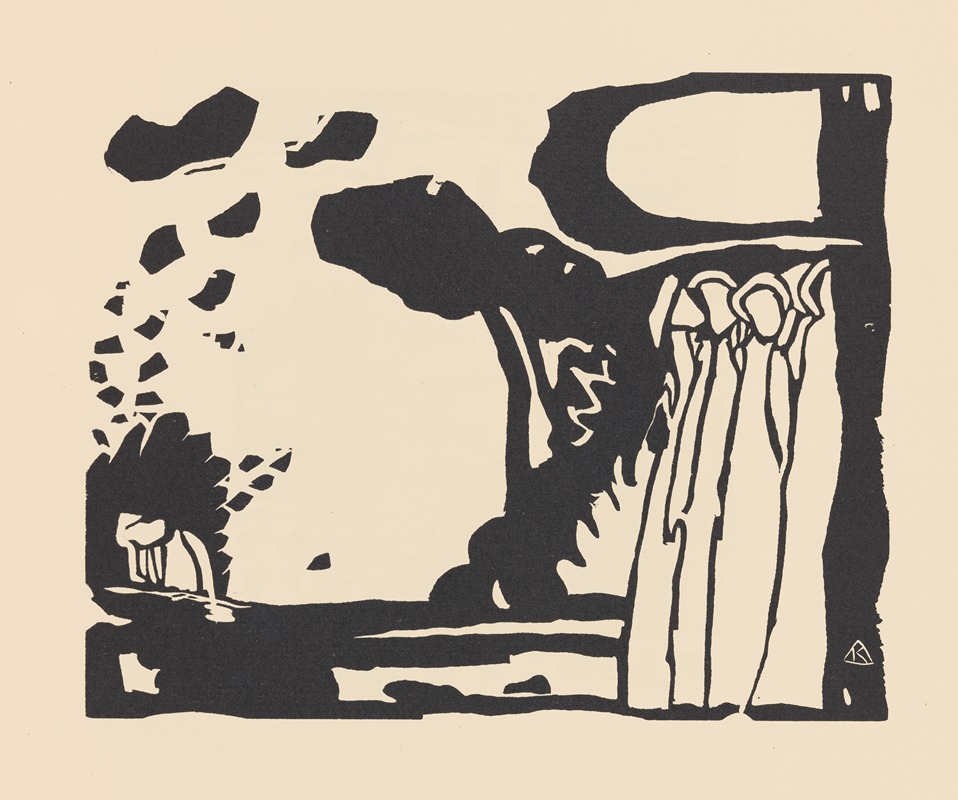
Klänge Pl.10
A hand-painted replica of Wassily Kandinsky’s masterpiece Klänge Pl.10, meticulously crafted by professional artists to capture the true essence of the original. Each piece is created with museum-quality canvas and rare mineral pigments, carefully painted by experienced artists with delicate brushstrokes and rich, layered colors to perfectly recreate the texture of the original artwork. Unlike machine-printed reproductions, this hand-painted version brings the painting to life, infused with the artist’s emotions and skill in every stroke. Whether for personal collection or home decoration, it instantly elevates the artistic atmosphere of any space.
Wassily Kandinsky's Klänge Pl. 10 is one of the woodcuts from his celebrated portfolio Klänge (Sounds), which was first published in 1913. This portfolio is a significant work in Kandinsky's oeuvre, as it combines his visual art with his literary experiments, reflecting his interest in the synthesis of the arts. Klänge consists of 56 prose-poems and 12 accompanying woodcuts, showcasing Kandinsky's exploration of abstraction and his theories on the spiritual in art.
Klänge Pl. 10 is a woodcut that exemplifies Kandinsky's transition from figurative to abstract art. The image, like others in the portfolio, is characterized by its bold, simplified forms and dynamic composition. The woodcut medium allowed Kandinsky to experiment with stark contrasts and textured surfaces, emphasizing the interplay between positive and negative space. This particular plate, like much of Kandinsky's work during this period, reflects his interest in expressing inner emotions and spiritual ideas through non-representational forms.
The Klänge portfolio was created during a pivotal time in Kandinsky's career, as he was developing his theories on abstraction and the emotional resonance of color and form. This period also coincided with his involvement in the Blaue Reiter (Blue Rider) group, an influential collective of artists based in Munich. The group sought to break away from traditional artistic conventions and explore new ways of expressing spiritual and emotional truths through art. Kandinsky's contributions to the group, including his writings and artworks, were instrumental in shaping the direction of modern art.
The woodcuts in Klänge are closely tied to Kandinsky's theoretical writings, particularly his seminal book Concerning the Spiritual in Art (1911). In this text, Kandinsky articulated his belief that art should transcend material reality and evoke a deeper, spiritual response in the viewer. The abstract forms and compositions in Klänge Pl. 10 align with these ideas, as they invite viewers to engage with the work on an intuitive and emotional level rather than through literal interpretation.
The Klänge portfolio was printed in a limited edition, and original copies are now considered rare and valuable. It is regarded as one of the key works of early 20th-century modernism, reflecting Kandinsky's innovative approach to both visual and literary art. Today, individual plates from the portfolio, including Klänge Pl. 10, are held in major museum collections and are studied as important examples of Kandinsky's contribution to the development of abstract art.






